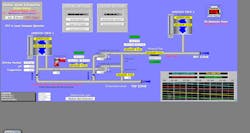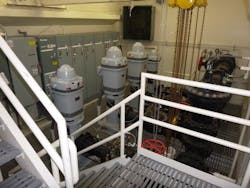About the author:
Greg Jackson is CEO for WIN-911. Jackson can be reached at [email protected] or 512-326-1011.
Water and wastewater professionals face myriad challenges to ensure safe water for the communities in which they work. These issues intensified and increased with the onset of COVID-19. A recent American Water Works Association survey asked, “What challenges to sustaining business operations is your organization anticipating due to COVID-19?” Of the utilities that responded, 75% indicated that “Absenteeism and the Continuity of Operations” was their number-one challenge, with impacts on field operations being number two at 46%.
On March 28, 2020, the Department of Homeland Security (DHS) released Guidance on the Essential Critical Infrastructure Workforce: Ensuring Community and National Resilience in COVID-19 Response. The DHS guidance specifically recognizes water and wastewater workers and suppliers to the water sector as essential critical infrastructure workers. In spite of this, many are working remotely because protecting utility employee health is vital for continuing operations, especially if other emergencies—like main breaks or flooding—overlap with the pandemic.
Even before this virus, many facilities have been operating with a shortage of treatment plant operators largely due to retirements occurring in an aging workforce. This has left many municipalities in need of immediate replacements or short-term transition plans. Without qualified individuals to ensure state and federal standards are met for drinking water and wastewater, communities run the risk of failing to provide an essential public health service to residents and local businesses.
With fewer workers on site, how can one ensure that plants do not experience unanticipated downtime? Fortunately, one can explore these issues for solutions to navigate these challenges.
Water Infrastructure
Many water supply systems were designed and built decades ago, and old systems are susceptible to a variety of failures. Corroding pipes can leak lead and copper directly into the drinking supply. Some need technological updates to keep pace with stricter pollutant standards that reflect the evolving scientific understanding of risk exposure.
Unfortunately, investments in water utilities, which include supply systems for distributing drinking water as well as wastewater and sewage treatment systems, have not been keeping up with need. In cities around the globe, the drinking water distribution infrastructure is aging rapidly and encountering failures with increasing frequency. This is challenging under normal circumstances but becomes mission critical during a pandemic.
To help address this, forward-thinking municipalities are incorporating digital technology to avoid unanticipated risks. These innovations can drive significant economic and environmental improvements, and ensure continuity in service when staff are working remotely.
Funding Challenges
Funding for infrastructure projects has always been challenging. This will only increase now with states and cities experiencing reduced tax revenue because of the pandemic.
An article by global consulting firm Stantec titled, “4 common water infrastructure problems and how to fund improvement initiatives,” notes that the biggest challenge in addressing aging water infrastructure is securing funding for improvement initiatives. Water and wastewater utility projects are notoriously difficult to fund compared to other infrastructure initiatives. One major reason is that these systems are much less visible compared to roads and bridges, which makes it harder to generate public support for improvement and maintenance.
Remote Monitoring
The need to reduce costs associated with support maintenance of aging infrastructure is increasing the adoption of smart water management technology, including remote monitoring.
A recent report by Bluefield Research titled, “Focus Report, Water Industry 4.0: U.S. & Canada Digital Water Market Forecast, 2019-2030,” presents an analysis of the U.S. and Canadian digital water market. This report cites that annual capital expenditures for digital water solutions will rise from $5.4 billion in 2019 to $10.8 billion in 2030, setting the stage for more advanced monitoring and management of critical infrastructure.
Under increased and unprecedented pressure to do more with less, and to find new means of paying for infrastructure, water owners and operators recognize that it is essential to understand and optimize the capacity of their assets. One way they can do this is through the use of remote monitoring software, which allows fewer people to monitor many more assets using devices that people already have, such as smartphones and tablets. Uninterrupted remote availability is essential to ensure that systems can be continuously monitored, even without staff onsite or with very few people working at the facility.
The benefits of utilizing a remote monitoring software system via a mobile app include:
- Streamlined decision making. Push notifications let users quickly see what is wrong, send an acknowledgment, and monitor alarm condition changes in real-time, right from a smartphone.
- Team problem solving. Chat helps the entire team converse, brainstorm, and share solutions on-the-fly, from wherever they are—whether in the plant, at home or on the road.
- More efficient work. Team visibility shows who has seen an alarm as well as who has acknowledged it, reducing guesswork and redundant responses.
- Multiple communication channel support. Ensuring resiliency through voice notification and SMS messaging in the event of internet connectivity issues.
Remote Monitoring in Action
Bellevue, Washington, is a mid-sized city with a population of 149,000 and is located just east of Seattle on the shores of Lake Washington. Filled with lush forest, parks, and streams, it is routinely rated one of America’s Best Places to Live. Helping support this livability is the Bellevue water service. Its water, sewer, and storm water system spread across 37 square miles, and includes 24 reservoirs, 22 pump stations, 145 active pressure reducing valve stations, and more than 600 miles of pipes.
Like many cities, Bellevue’s water infrastructure is aging. A single water main break can cut service to homes for an extended period. With so much at stake, maintenance crews need to anticipate issues ahead of time as well as quickly respond when equipment fails. This is even more important after hours and on weekends when there are not as many crews in the field.
The list of what can go wrong is long—from pipe pressure swings to power and communication failures to flood control malfunctions. The water service wants to be alerted to such problems within two minutes after coming into the Wonderware SCADA system.
Previously, the water and wastewater departments used a pager system as well as an auto-dialer to connect to an answering service after hours. Unfortunately, the answering service could not be relied on, so the facility installed an SMS text solution to replace it. Now, when a high- or low-pressure alarm triggers, a text is automatically sent to the smartphone of the on-call operator. If no one acknowledges after a certain time, the alert immediately escalates to the next technician on the list, and so on.
Telemetry Technician Mike Hetzler recalls how a recent water main break illustrates the value of this remote monitoring system. Typically, staff would be alerted to after-hours water main breaks by the public.
“Early detection of low pipeline pressures, as a result of the remote monitoring system, alerted operations staff, who then alerted maintenance staff, of the water main problem before public notification reached our after-hours staff. Remote monitoring gave us a faster response to this after-hours emergency,” Hetzler said.

